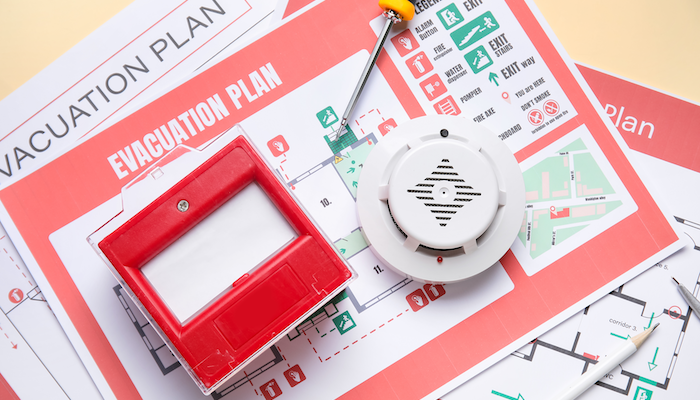[Your Newsletter Name]
Helpful tips for family caregivers
February/March 2025
In our first article, we take a broad look at the signs of a heart attack. They might not always look like what you see on TV! Knowing the more subtle symptoms, as well as the potential differences between men’s and women’s experiences, is very important for those who care for older adults. In our second article, we explore how to keep a loved one with dementia mentally stimulated. Just because their cognition has changed doesn’t mean they don’t still need enriching activities. We offer lots of easy ideas for you to choose from. In our final article, we turn to the important topic of ensuring there is an escape plan in place for your loved one in case of fire.
Contact Us
Fill in this form and one of our caring staff will get back to you.
"*" indicates required fields
Heart attack warning signs
Heart attacks don’t always look like what you’d expect. While you might imagine a person collapsing with intense chest pain, that may not at all resemble what happens. It is true that the most common heart attack symptom for a man or woman is chest pain or discomfort that lasts more than a few minutes. But other symptoms can be subtle and—especially in women—may even be mistaken for the flu! Pay attention and act quickly if something seems off about your loved one.
Typical warning signs
- Chest pain and/or burning sensation
- Pain or discomfort in one or both arms
- Heart palpitations
- Shortness of breath
- Feeling weak or faint
Some less-typical signs
- Pressure or tightness in the chest (different from pain)
- Pain in jaw, neck, or back
- Dizziness
- Cold sweat
- Indigestion, nausea, or vomiting
- Unusual fatigue or insomnia
Symptoms in women
Women are more likely than men to have symptoms unrelated to chest pain, such as fatigue, insomnia, and nausea. Women are also more likely to experience pain in the back or jaw. These symptoms can occur when resting or even when asleep.
Some symptoms may start days or weeks before the actual heart attack. If your loved one experiences any combination of these signs, seek help. If you suspect a heart attack, call 911. The longer the heart is without oxygen, the more damage occurs. Emergency responders can start treatment immediately. They can also prepare the hospital for your arrival, ensuring that care is provided quickly.
Return to topEngaging activities for dementia
If your loved one has Alzheimer’s or another dementia, you may wonder what you can do to keep their life lively and boredom at bay. There are likely more options than you realize! The first step is to reflect on your relative’s history and hobbies. They’ll engage best with activities that fit with their identity and feel meaningful to them. Ideally, activities that help them feel purposeful and included. Here are some ideas to spark your imagination, whether you’re looking for something playful or productive.
Leisurely activities
If you’re indoors: Do a puzzle; play dominos, marbles, cards; review photos; set up a toy train; dance to music; befriend a robot animal. If you’re outdoors: Go bird watching, paint flowerpots, walk in a park, take a drive or ride in a boat, name flower colors.
Tasks-oriented activities
Indoors, you can brush the dog, arrange flowers, organize books/magazines, sort bolts and nails, arrange jewelry box (or fishing tackle box), set the table, fold napkins/laundry. Outdoors, perhaps trim roses, plant flowers, sweep, or rake.
What’s appropriate will change as the disease progresses from early to middle and late stages. For example, if your loved one has been avid about golf, tennis, or basketball, they’ll be able to continue with friends for a while, then switch to just putting, or using a backboard, or using a single hoop. In late stage, make up simple ball games involving rolling or tossing. If your relative loved to cook, have them find recipes. Cook with them. Keep them engaged, but simplify tasks over time.
No matter what the activity, you will likely need to help your loved one get started and stay with it. Expect their attention span to shorten with each stage.
Alternatively, many communities have adult day centers or senior centers that offer daytime activities for older people. This is a great resource to keep in mind (and catch a break for yourself, too).
Return to topFire escape planning for older adults
Creating a fire escape plan is smart for everyone but essential for older adults, who are at greater risk during a fire. Planning in advance can make all the difference.
Consider the living situation. Ideally, your loved one would live, or at least sleep, on the ground floor. If your relative lives in a high rise, ask management if there is an automatic sprinkler system. Notify them that your relative may need assistance in case of fire. In a facility, ask about emergency plans and how often they are practiced.
Use fire alarms. Ensure there’s an alarm inside every bedroom and on every level of the home. For those with hearing impairments, choose alarms with strobe lights or vibrating bed shakers. Test alarms monthly and verify that your loved one knows what to do if they hear that sound.
Identify two exits from every room. Check that doors and windows can be easily opened by older hands. Ensure that escape routes are free of obstacles and are accessible, even with mobility devices such as walkers.
Keep essential items nearby. Have your loved one keep glasses, hearing aids, phone, flashlight, and other basics on the nightstand for quick access. For any emergency, keep a grab-and-go bag with medications and other essentials handy and visible.
Decide on a safe place. Choose an accessible, nearby location where your loved one can wait for help.
Practice the fire escape plan at least twice a year. Try to practice both during the day and at night. Update the plan as needs change.
Communicate. Discuss the plan with neighbors, family, and any aides. Arrange for someone to be your relative’s nearby helpmate. If they have a medical alert device, share the plan with the company. Review the plan with the local fire department. Ask if they can keep information about your loved one’s needs on file or can flag their address in the dispatch system.
Return to top



